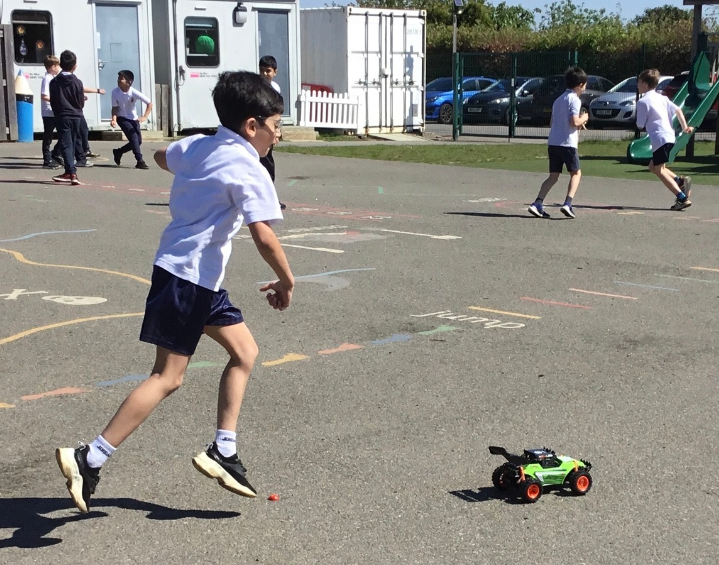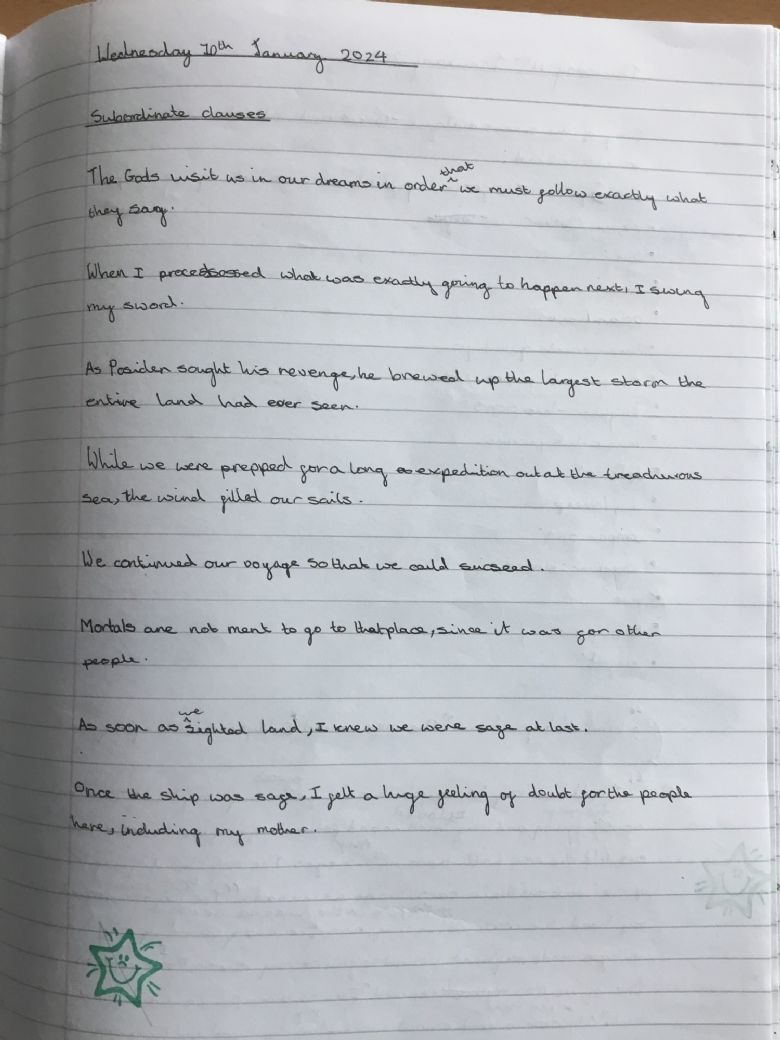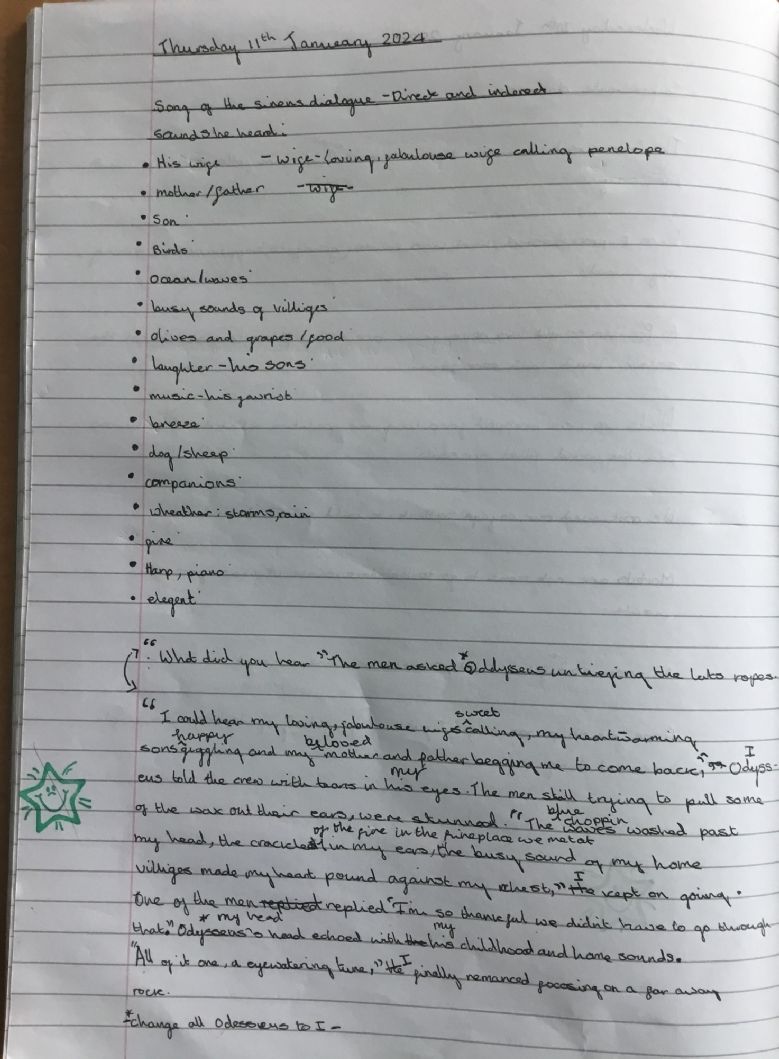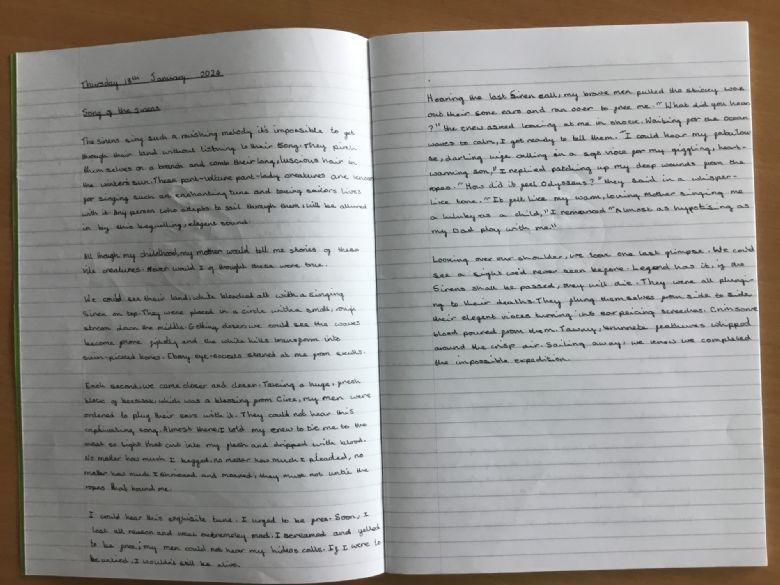Writing
At Pyrford, writing is at the heart of the curriculum and we encourage our pupils to apply their knowledge of writing skills across all curriculum subjects.
By the end of Year 6, our goal is for all children to leave primary school with a love of writing and with the ability to express their thoughts and ideas clearly and creatively through the written word. In order for children to see themselves as successful writers, they need to be involved in writing for a real purpose, a range of genres and for different audiences.
We also intend to create writers who can re-read, edit and improve their own writing, and confidently use the essential skills of grammar, punctuation and spelling.


Pyrford School Writing Structure
We use an engaging text-based English curriculum to engage children with writing throughout the whole school.
Writing in EYFS is taught through shared reading, using picture books and high-quality Power of Reading texts. The children also write daily in their phonics lessons which provides them with the toolkit they need to apply skills within their own independent writing.
Years 2-6 follow a 3-week planning structure to deliver high-quality lessons around their chosen text. Year 1 follow an adapted 2-week structure of the planning cycle from the spring term. They use some of the whole school writing techniques in the Autumn term.
Our 3-week planning cycle has a focus each week:
Week 1 – Immersion: There is always an emphasis on immersion at the start of the pupil’s writing journey. We use elements of drama, art, hooks, book talk etc within our English lessons to fully engage our pupils.
Week 2 – Skills: Within week 2, there is a focus on the grammar and punctuation skills that have been chosen specifically to enhance the pupil’s independent writing. The skills the pupils learn will be applied through sentence work linked to the chosen text they are studying. The pupils will also plan for their independent writing within week two of the cycle.
Week 3 – Application: Using all the skills learnt within the cycle so far, the pupils will then write independently, after analysing the teacher’s ‘WAGOLL’ (What a Good One Looks Like). This is a high-quality piece of writing modelled by the teacher to support pupils with their own independent writing. The pupils in KS2 use ‘Targets for Success’ with each final piece of writing and are taught to edit and improve their writing using editing stations. Once edited, the pupils will publish their writing.
Nursery
The children love the story, “The Tiger Who Came to Tea” . As a hook for learning, the children were intrigued to find a tin of tiger food in nursery. After reading the story, the children had the opportunity to create their own version of the story.
. As a hook for learning, the children were intrigued to find a tin of tiger food in nursery. After reading the story, the children had the opportunity to create their own version of the story.

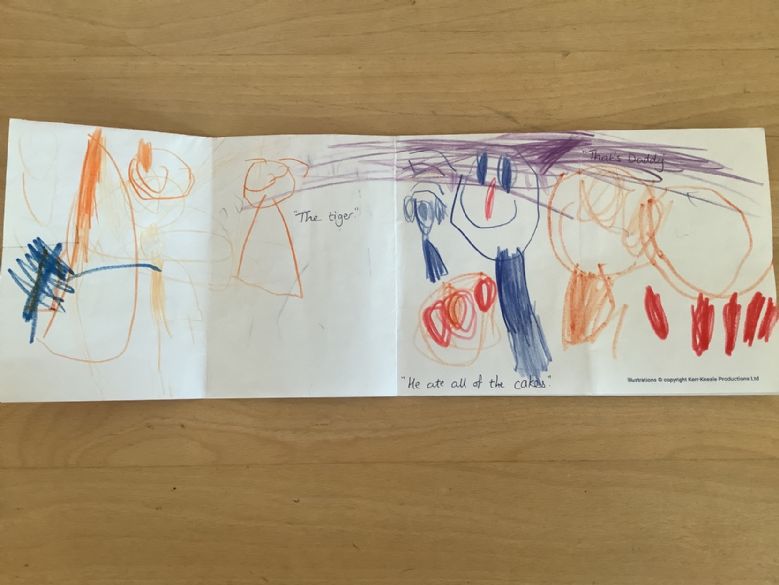
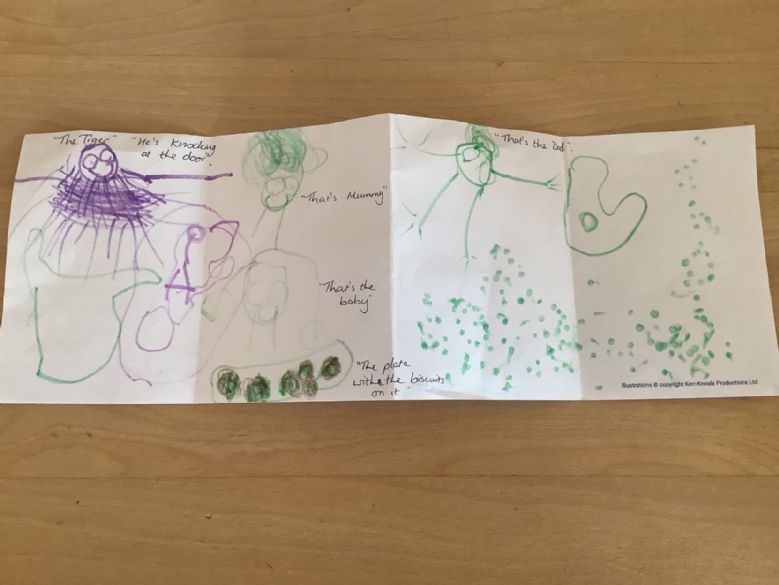
Reception
In the early years we aim to provide a purpose for writing 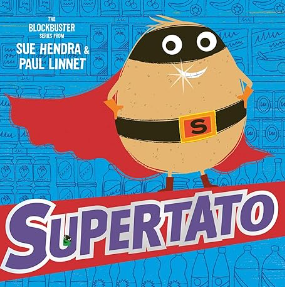 and make it irresistible.
and make it irresistible.
During our topic on Heroes we read stories from the Supertato series. The children came to school dressed as heroes and we have a problem to solve. The Evil pea had trapped all the veggies, including Supertato and the children had to come up with a plan to set them free. The children lured the peas away to a ‘pea party’ which was really a trap! The children designed posters to put up all around the school enticing the peas away and our plan worked! Hooray!

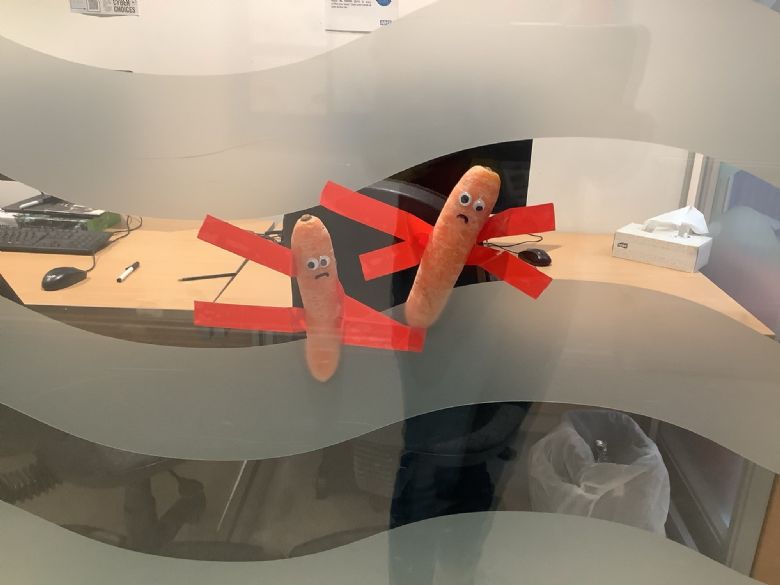
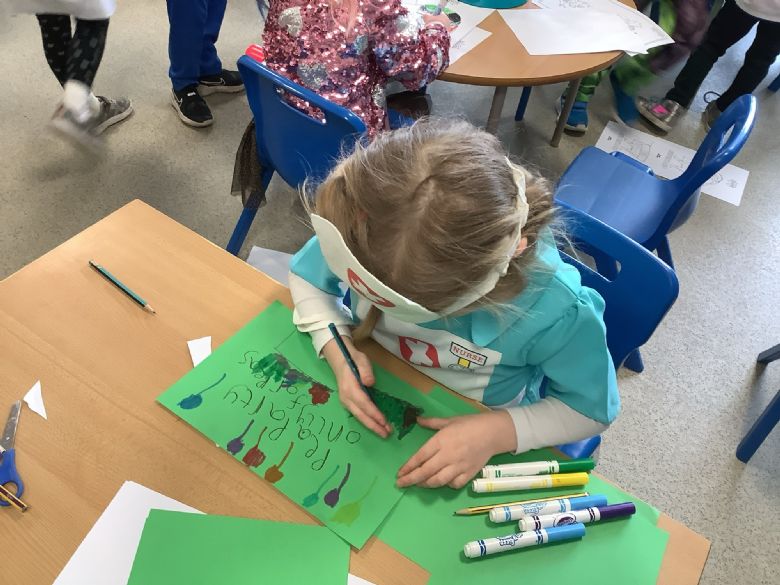

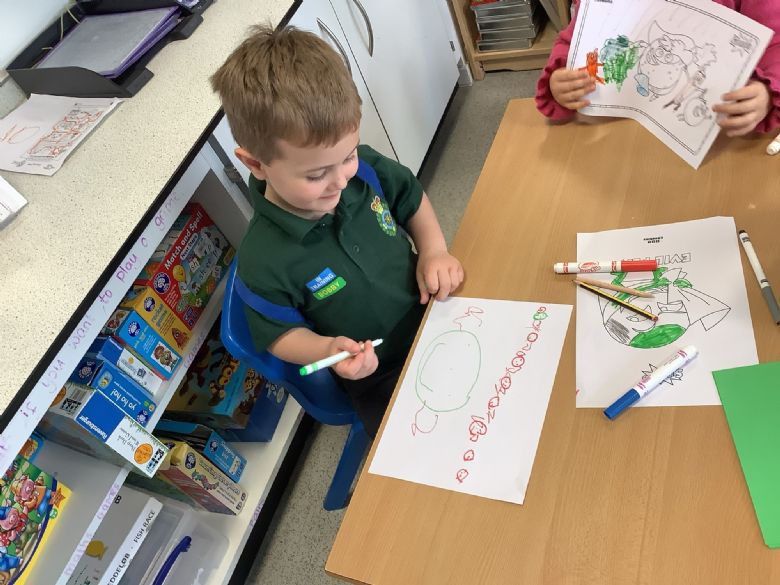
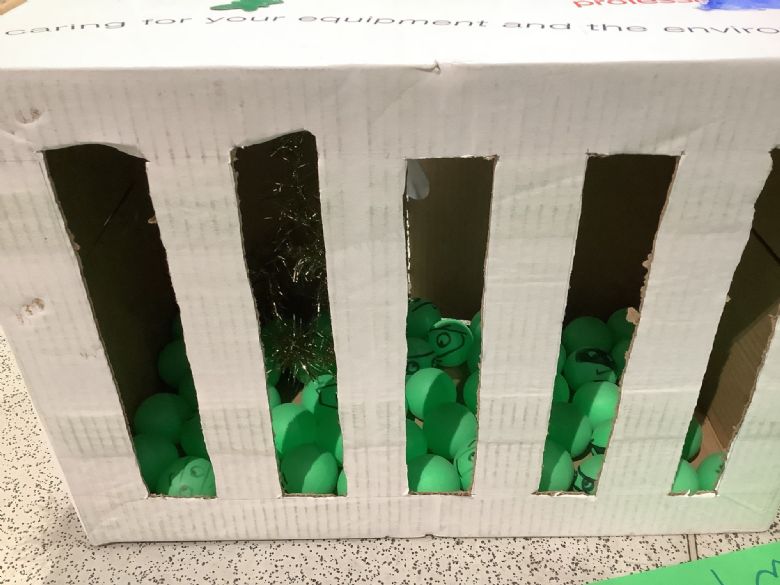
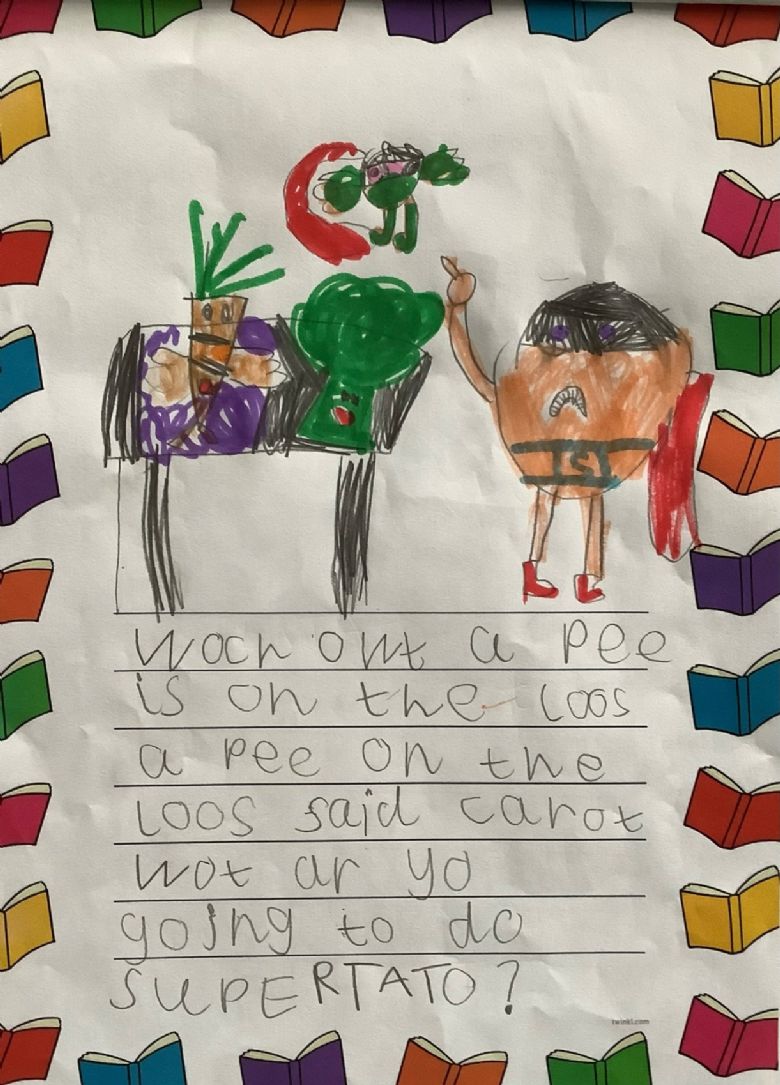
Year 1
Year 1 enjoyed reading ‘Little Red’ by Beth Woolvin. It i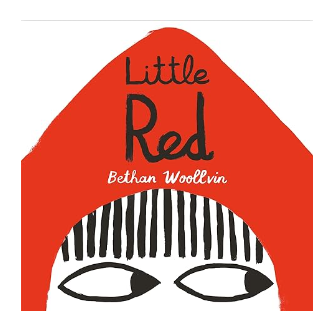 s an alternative version of Little Red Riding Hood, where Little Red is not fooled by the wolf and fights back.
s an alternative version of Little Red Riding Hood, where Little Red is not fooled by the wolf and fights back.
The children had a ‘hook’ lesson with a crime scene and used the clues to determine that the wolf has been killed. They then used adjectives to describe the prime suspect, and her flowing red cape.
The children re-told the story and then adapted it to create their own version of the story.
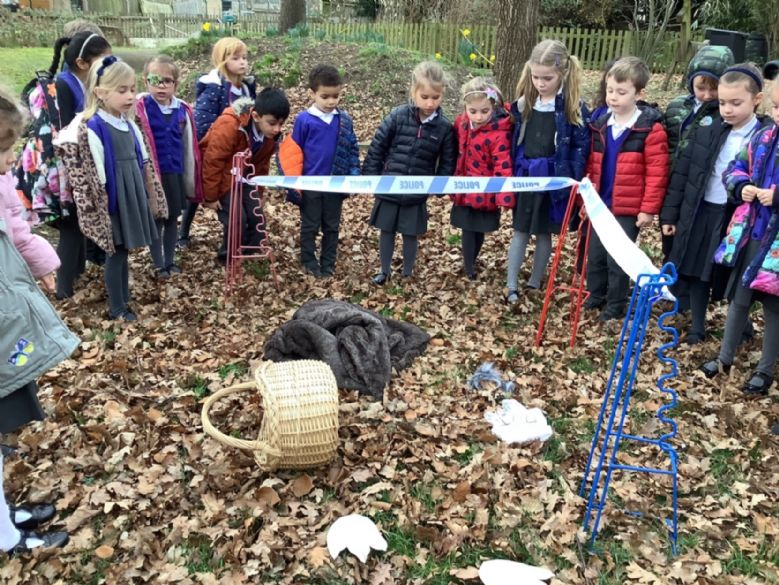

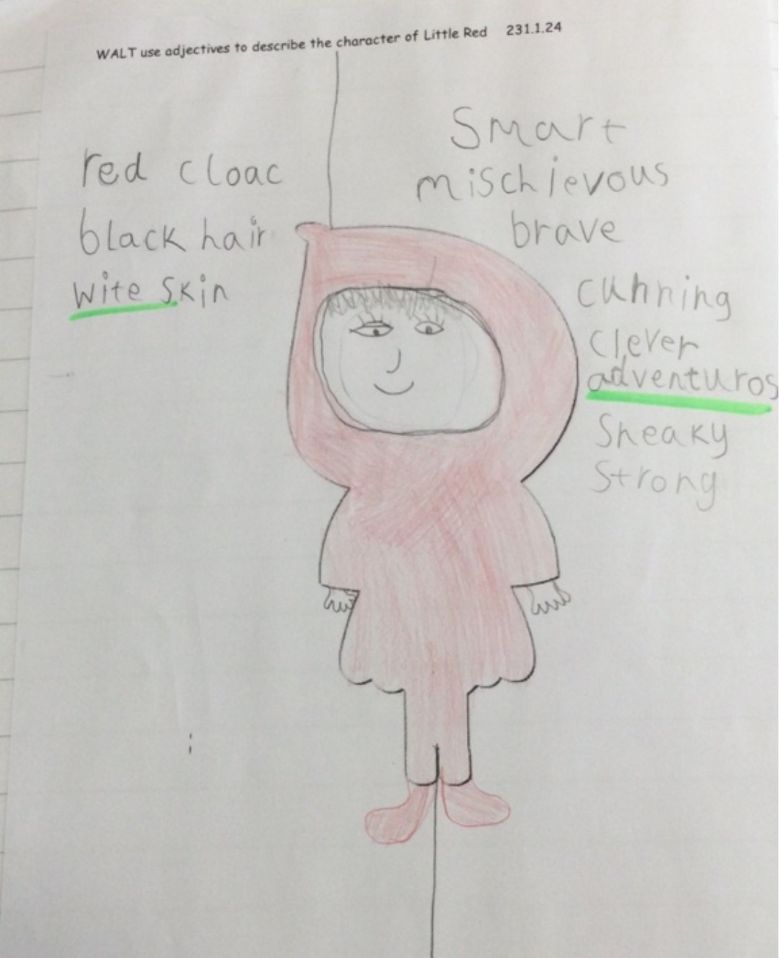
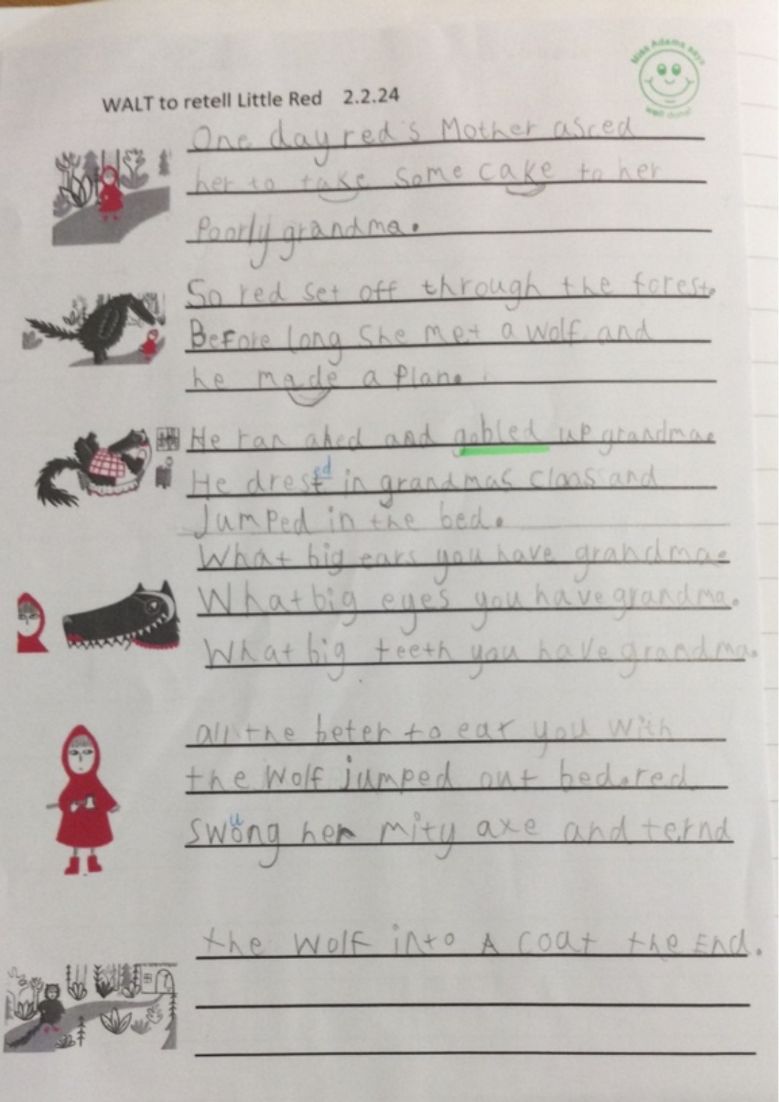
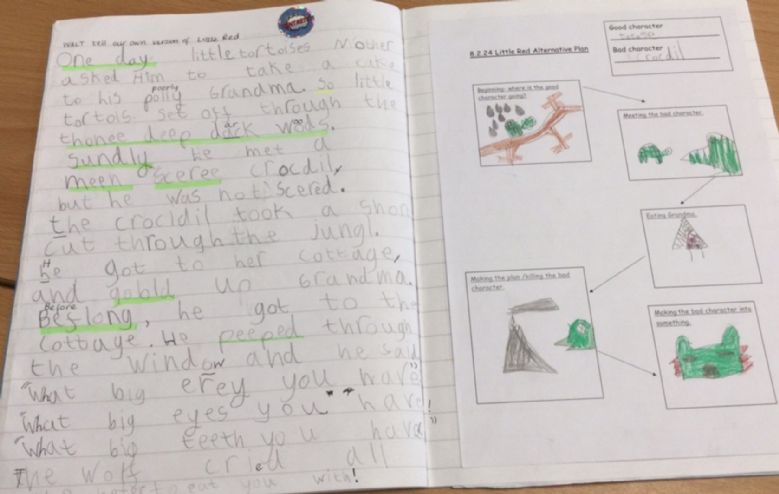
Year 2
Year 2 have been reading ‘Pattan’s Pumpkin’ by Chitra 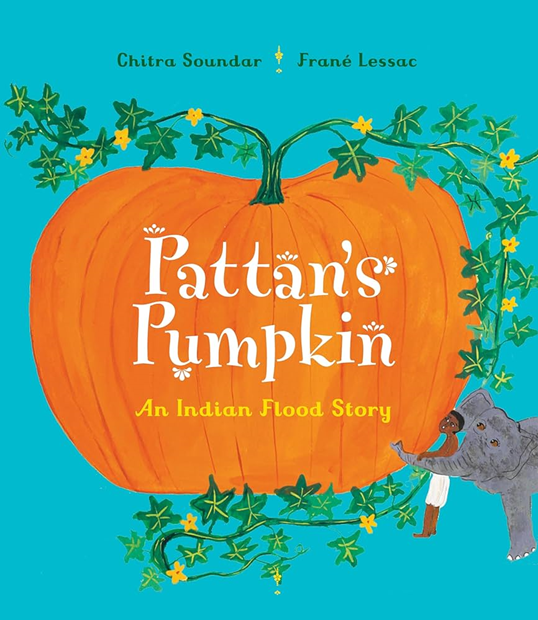 Soundbar, a traditional Indian flood story in which Pattan and his wife, Kanni, must find a way to escape the lashing rain before their land is underwater. Thankfully, Pattan has been growing something which might just save the day!
Soundbar, a traditional Indian flood story in which Pattan and his wife, Kanni, must find a way to escape the lashing rain before their land is underwater. Thankfully, Pattan has been growing something which might just save the day!
In their ‘hook’ lesson, the children drew their own landscape settings and labelled them with adjectives, similes and expanded noun phrases. In Week 2, the children focussed on developing their descriptions even further and experimented with using two verbs in one sentence.
At the end of our unit, the children planned, wrote and published their own adaptation of ‘Pattan’s Pumpkin’, creating their own adventures along the way.
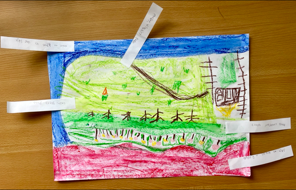
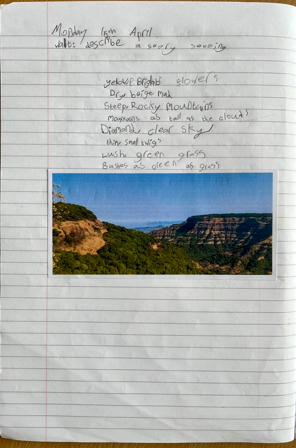
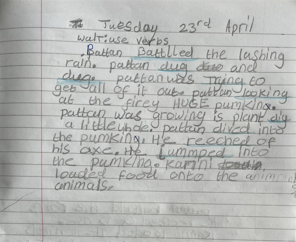
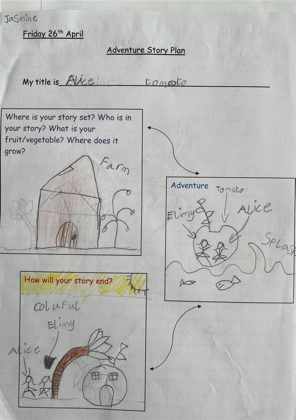
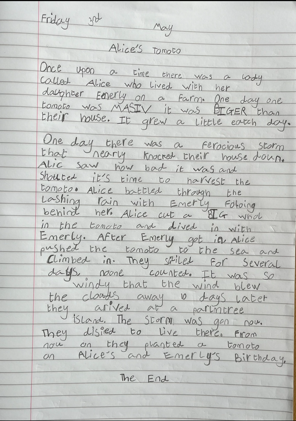
Year 3
The Year 3 children have been reading Oliver and the  Seawigs, about a boy called Oliver who goes off in search of his missing parents, but exciting things happen along the way! The children had lots of fun creating and drawing their own Seawigs as part of their hook.
Seawigs, about a boy called Oliver who goes off in search of his missing parents, but exciting things happen along the way! The children had lots of fun creating and drawing their own Seawigs as part of their hook.
During the ‘grammar focus’ of our writing cycle, the children practised writing ‘4A’ sentences (using 2 adjectives before each noun to make their sentences much more interesting to read.)
The children then planned and wrote a first-person narrative story.
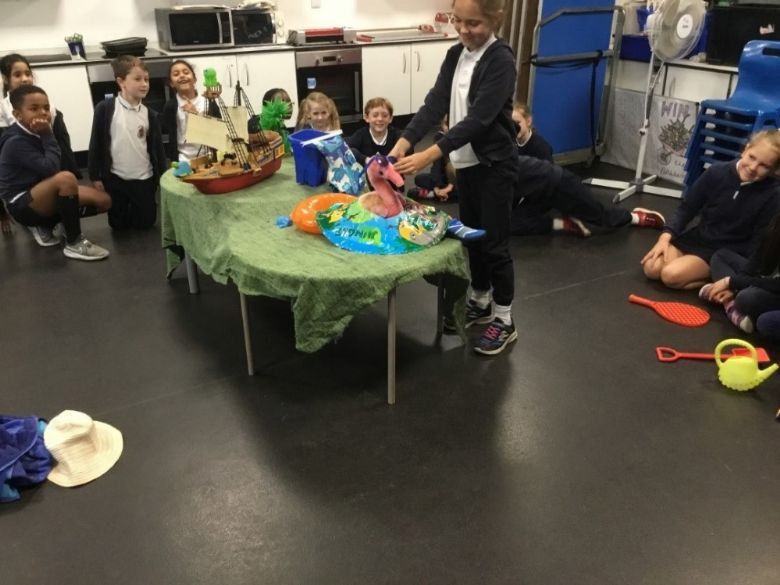
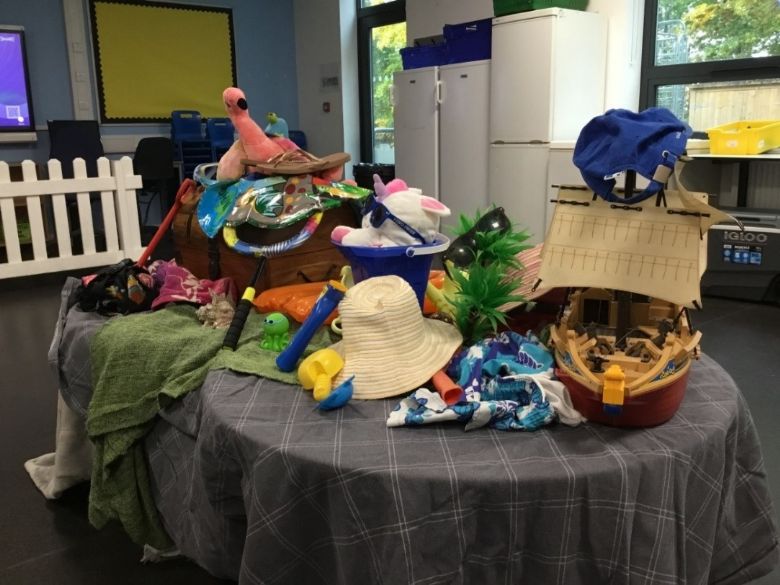

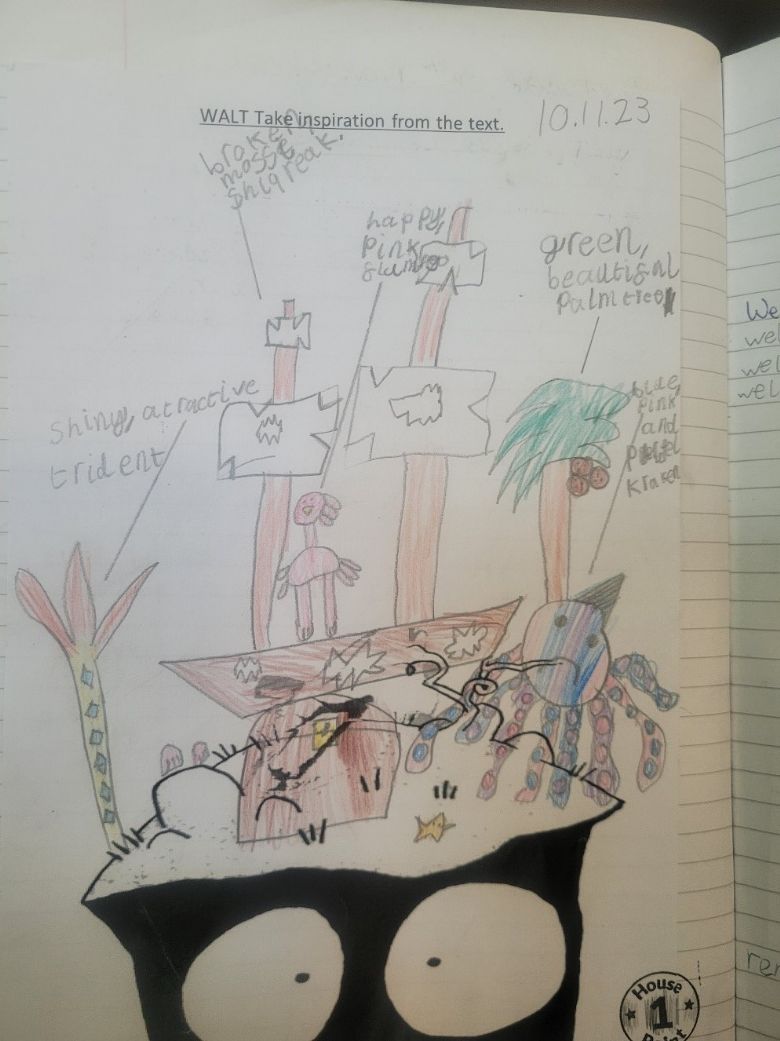

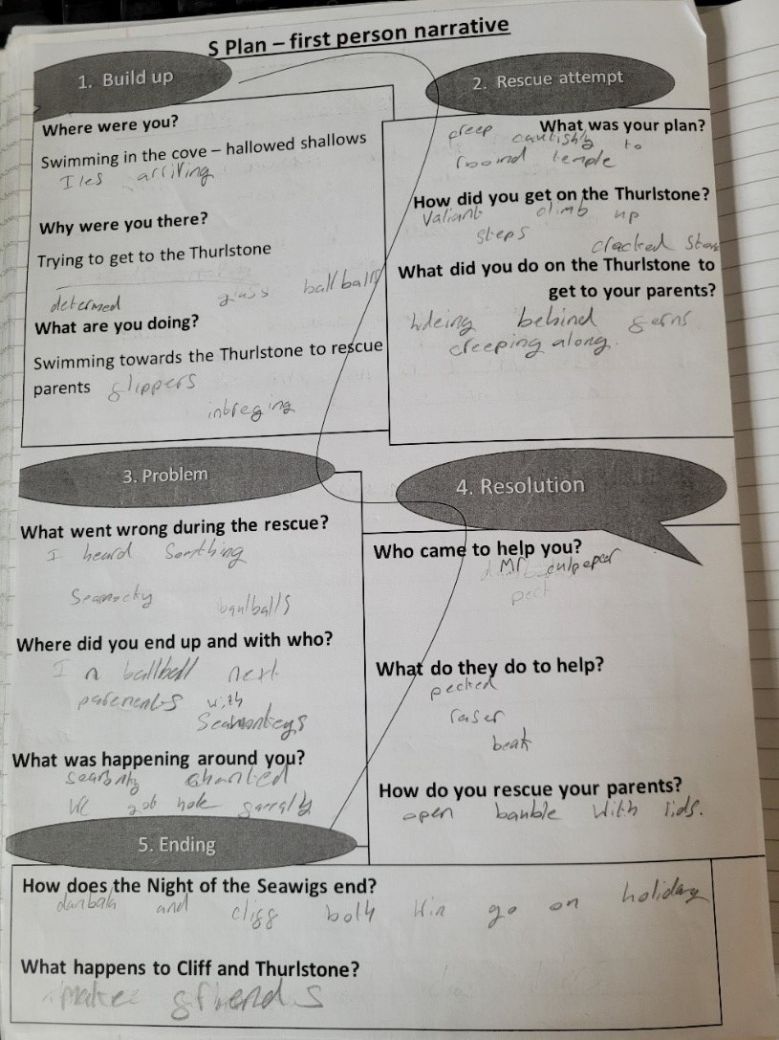

Year 4
The Year 4 children have been reading Varjak Paw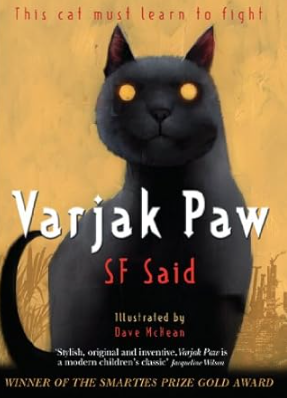 , a book about a martial arts loving cat. Varjak is set a challenge to talk to a dog and he gets confused when he thinks that cars are dogs. So as part of the hook during our immersion week, the children compared cars with dogs. They had great fun driving remote controlled cars around the playground whilst thinking about adjectives and adverbs which could be used to describe both cars and dogs. Later on, during the writing cycle, the children wrote poems called ‘Could these be Dogs?’
, a book about a martial arts loving cat. Varjak is set a challenge to talk to a dog and he gets confused when he thinks that cars are dogs. So as part of the hook during our immersion week, the children compared cars with dogs. They had great fun driving remote controlled cars around the playground whilst thinking about adjectives and adverbs which could be used to describe both cars and dogs. Later on, during the writing cycle, the children wrote poems called ‘Could these be Dogs?’
During the ‘grammar focus’ of our Varjak Paw writing cycle, the children practised writing fronted adverbials and also using conjunctions to make their ideas flow better.
In the first cycle of Varjak Paw, the children wrote a discussion text to argue whether Varjak should go over the wall to get help from a dog or stay behind and look after his grandfather, Elder Paw. The children planned their writing using the S plan and structured their paragraphs to good effect. The children took great care when they published their writing with a particular focus on joining their letters neatly and correctly.
During the final write in cycle 2, the children wrote a character description of Sally Bones, an evil, menacing white gang cat. The children published their character descriptions alongside a drawing of villainous Sally.
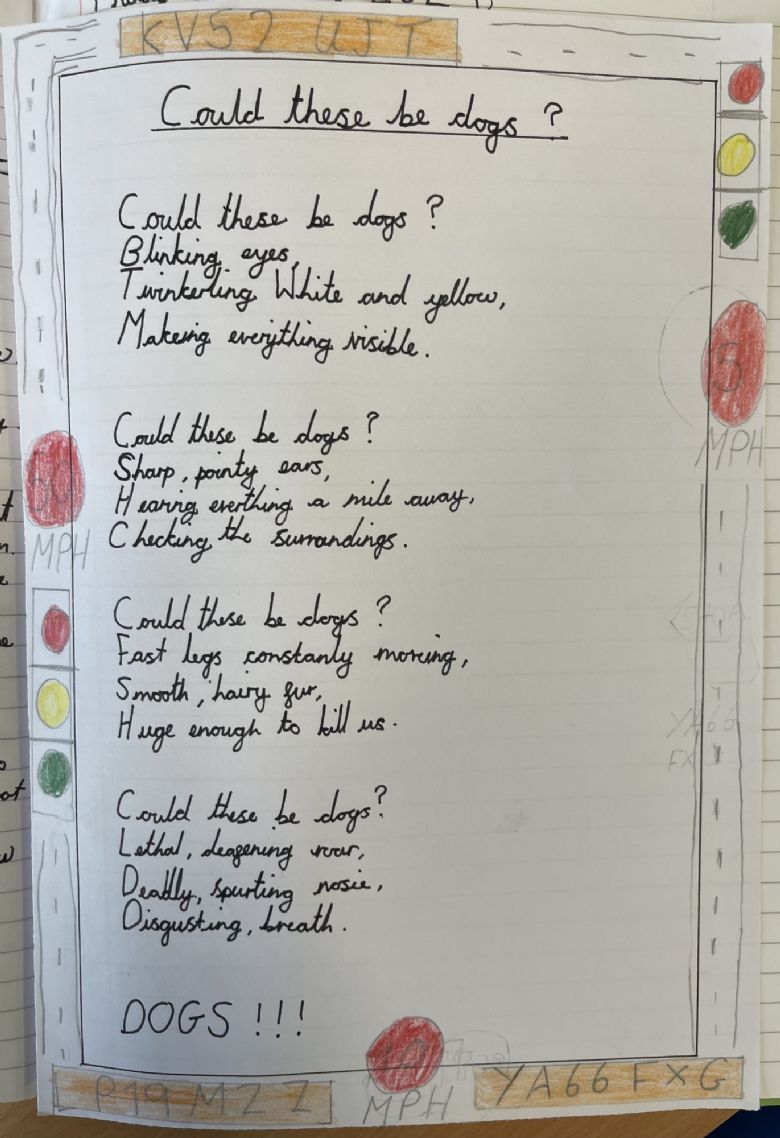
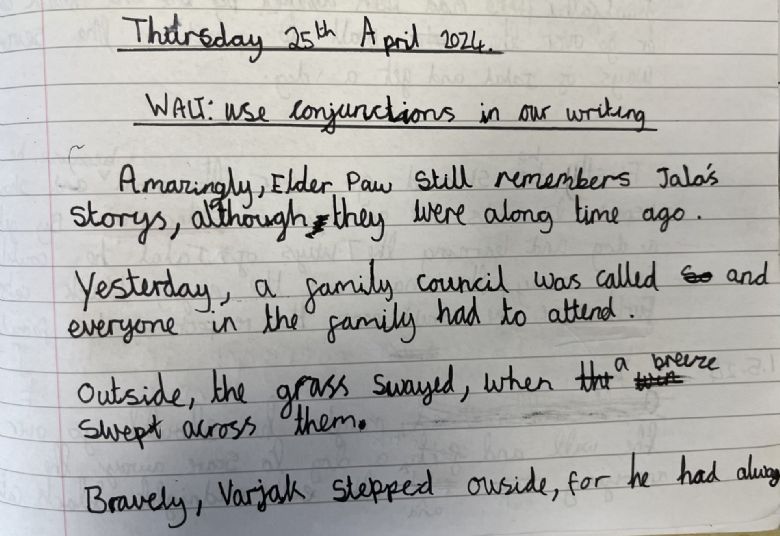
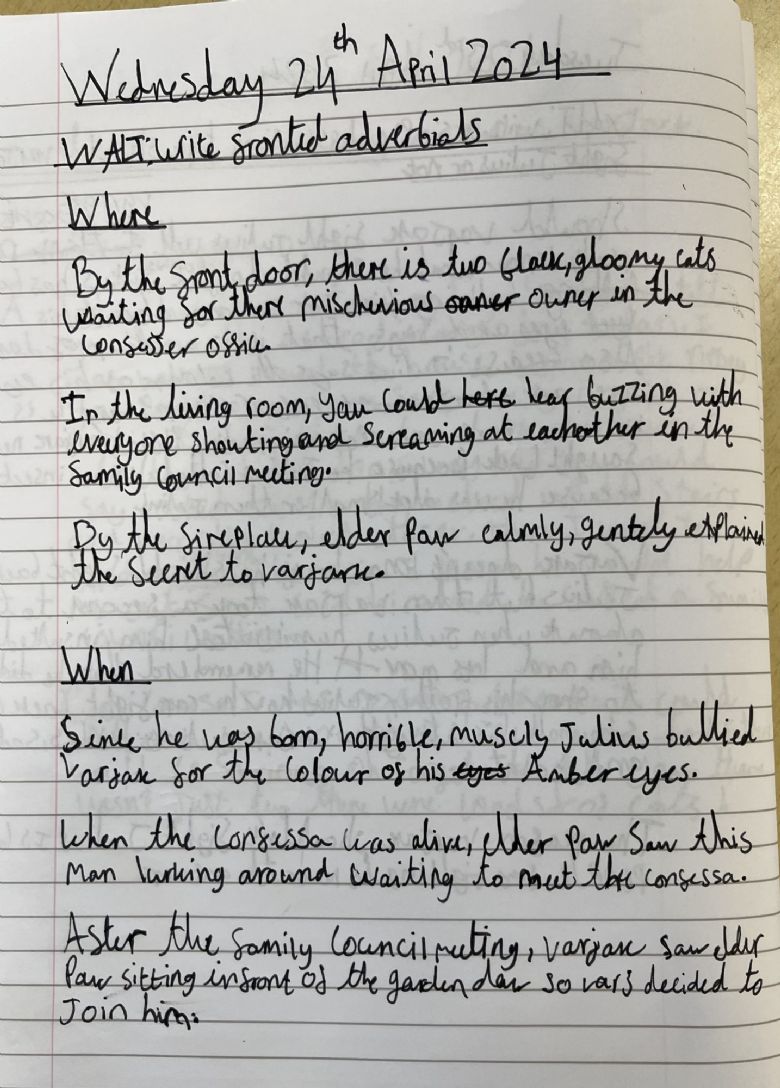

Year 5
The children in Year 5 have been reading Skellig, 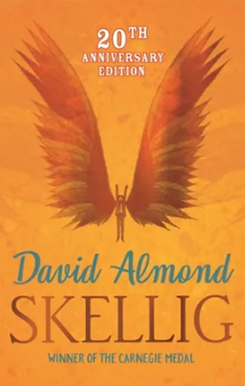 about a young boy called Michael, who discovers a strange creature lurking in the shadows…
about a young boy called Michael, who discovers a strange creature lurking in the shadows…
The children had lots of fun during their immersion week. They discovered an abandoned shed in the environmental garden with evidence of someone living inside! This caused much excitement and they were hooked instantly.
During the ‘grammar focus’ of our writing cycle, the children looked at using subordinating conjunctions and inverted commas as a way of enhancing a narrative.
The children then planned and wrote their own stories all about Mina and this strange creature in the garage.
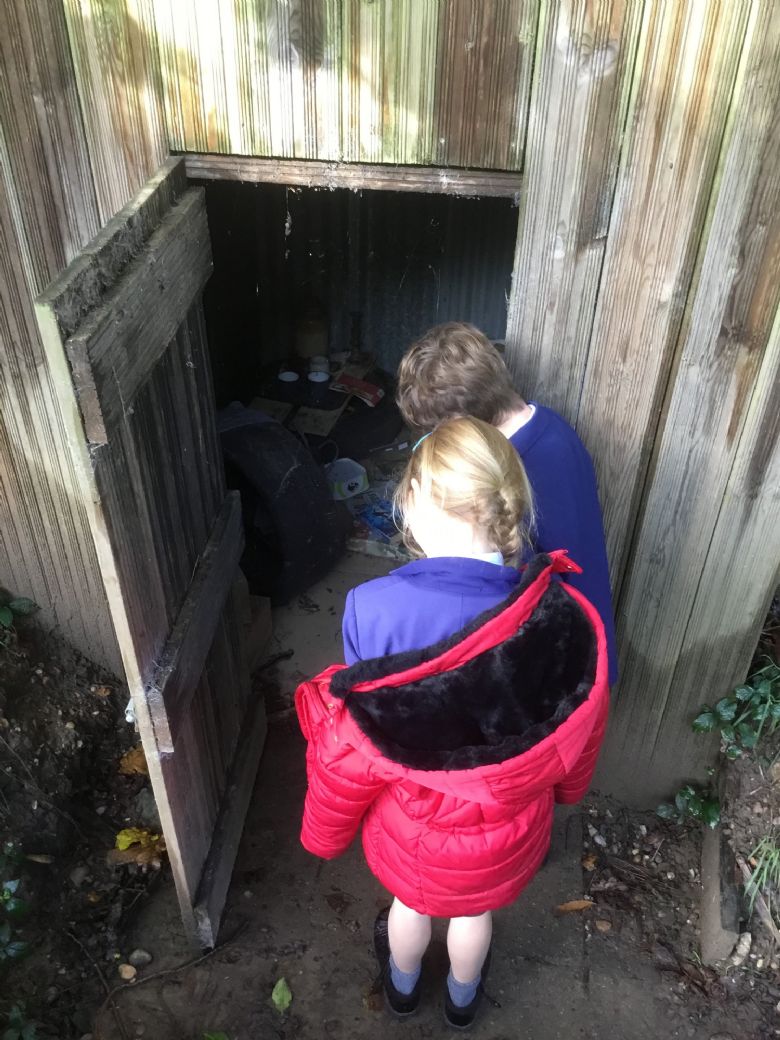
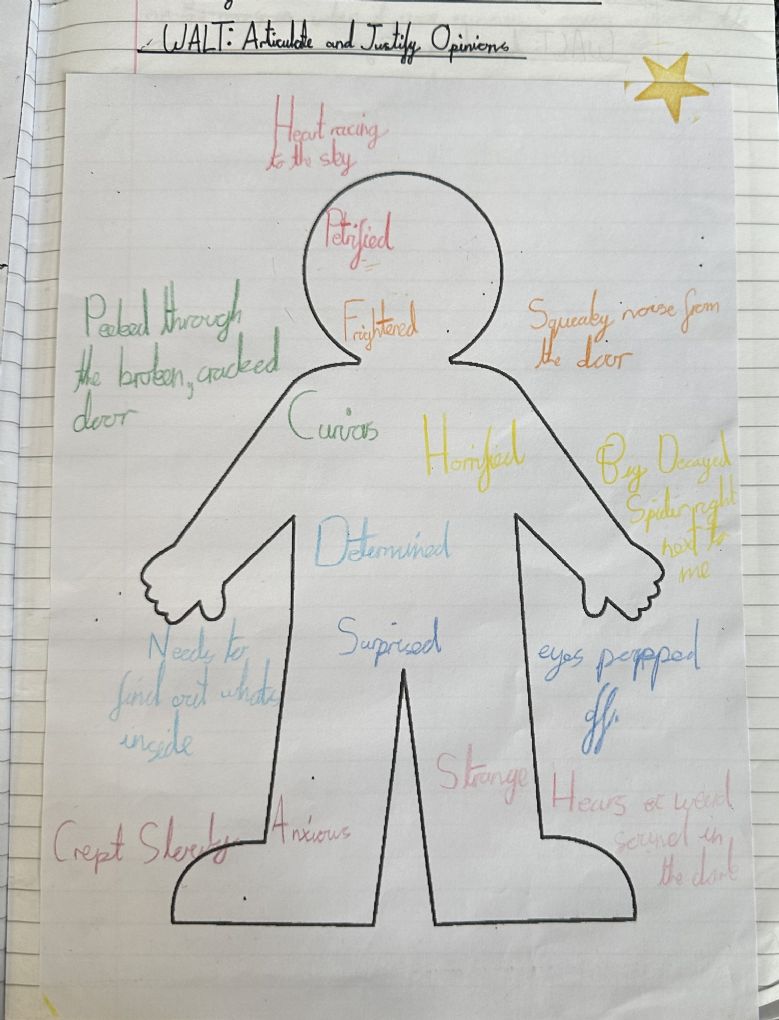

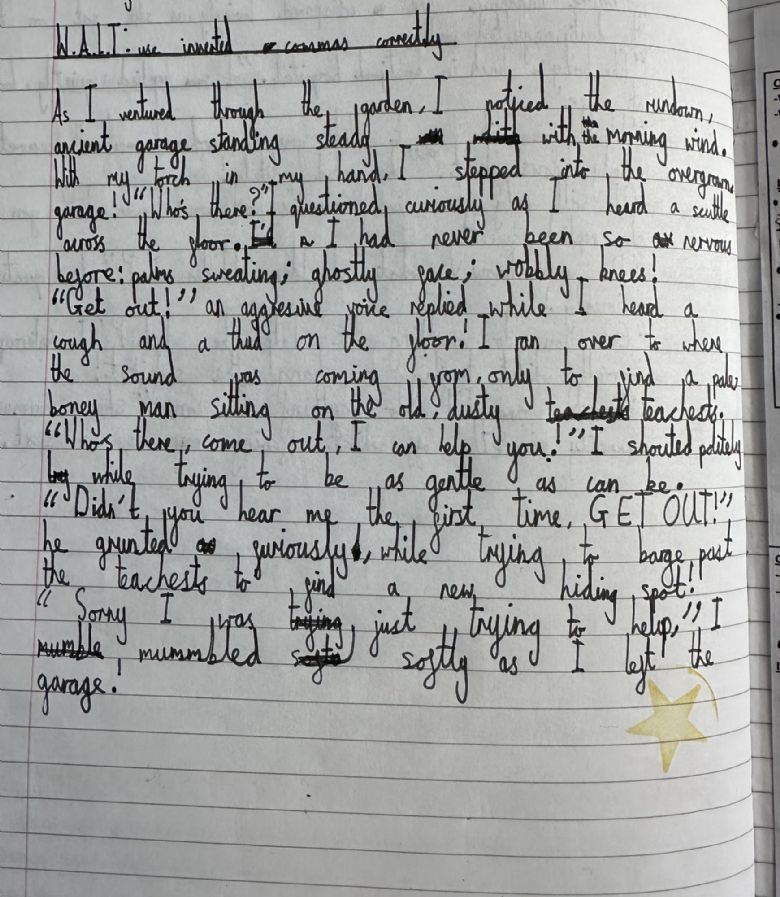
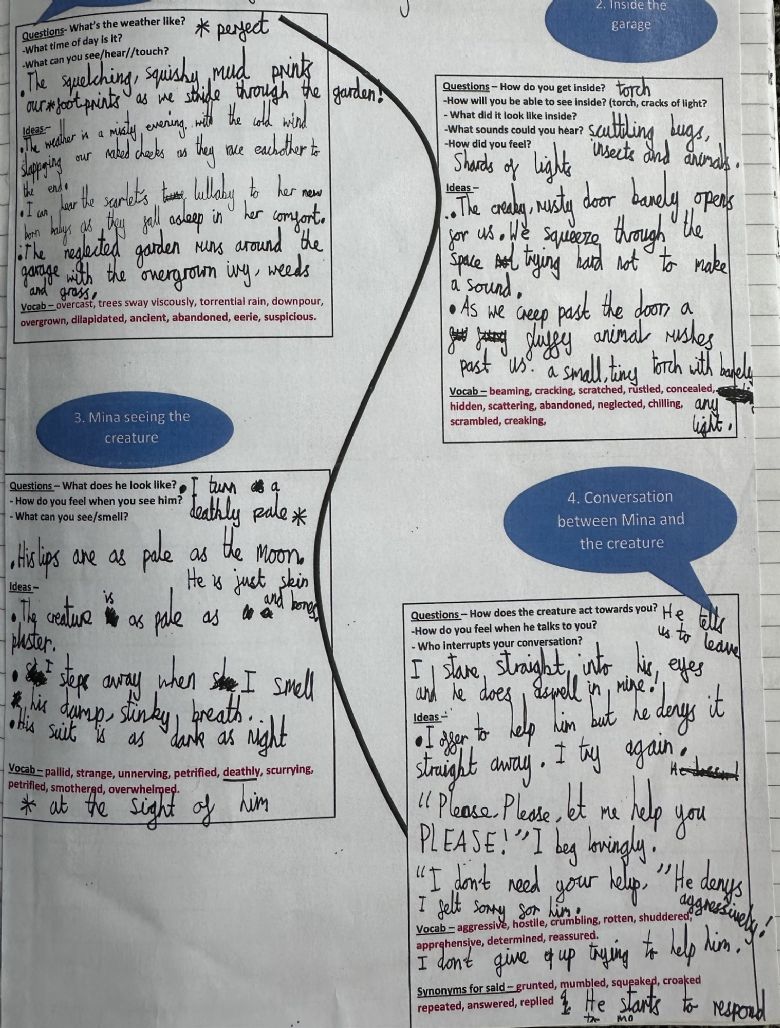
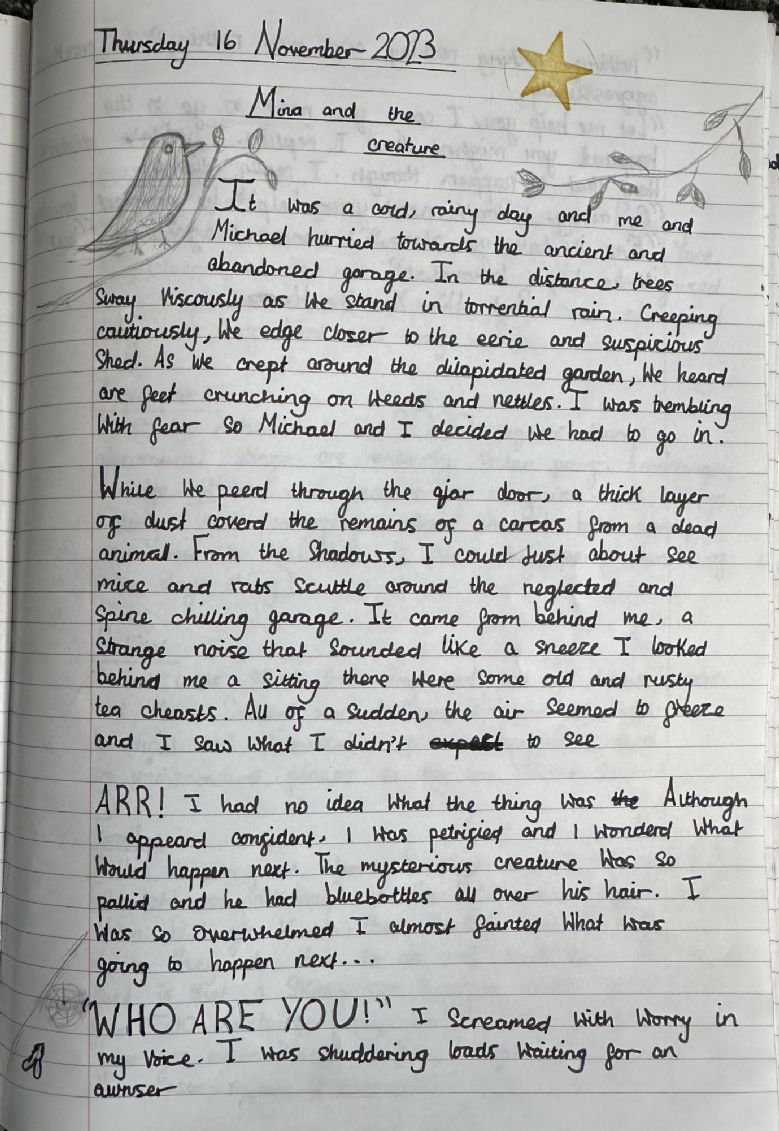

Year 6
Setting sail for Ithaca after the long and brutal Trojan War, 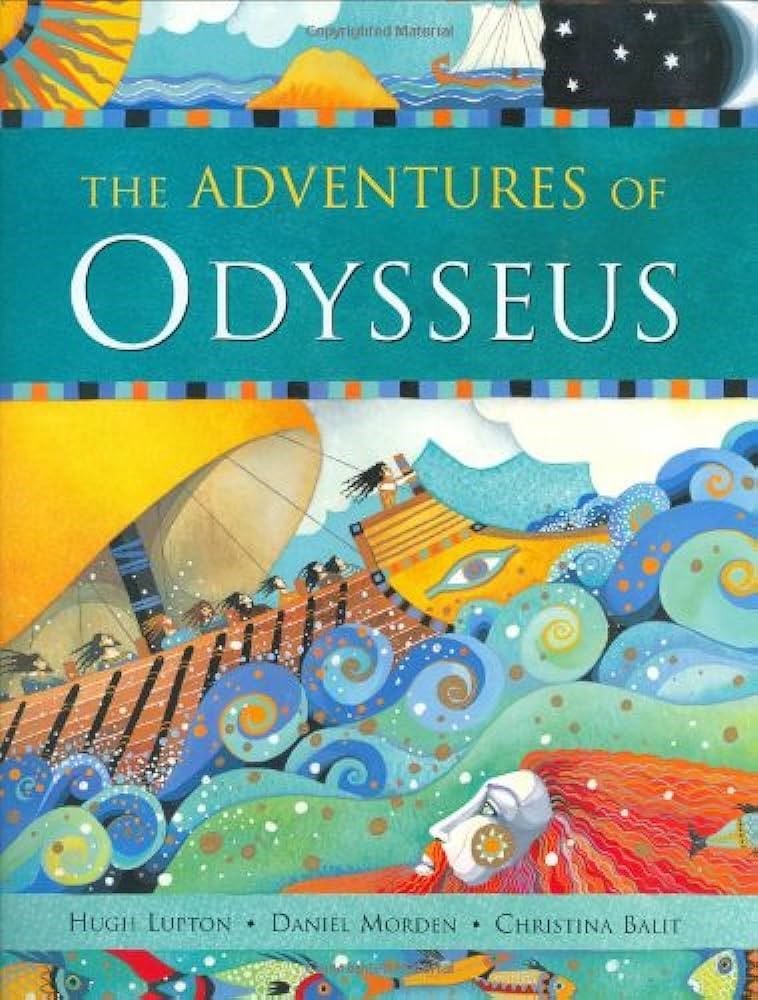 Odysseus imagines the grand welcome he will receive when he at last arrives home. But Poseidon has good reason to be angry with the Greek hero. As he fights to find his way, he learns that this is a quest of a lifetime – and even when he does reach his beloved homeland, his work is far from over.
Odysseus imagines the grand welcome he will receive when he at last arrives home. But Poseidon has good reason to be angry with the Greek hero. As he fights to find his way, he learns that this is a quest of a lifetime – and even when he does reach his beloved homeland, his work is far from over.
Year 6 follow this epic journey, writing about his encounter with the Sirens, half woman and half vulture who lure sailors to their shore with their hypnotic song. This is a writing opportunity to extend sentences, use figurative language in description and include tense dialogue between Odysseus and his crew as he describes what he hears. The children were captivated and let their imaginations take over.




